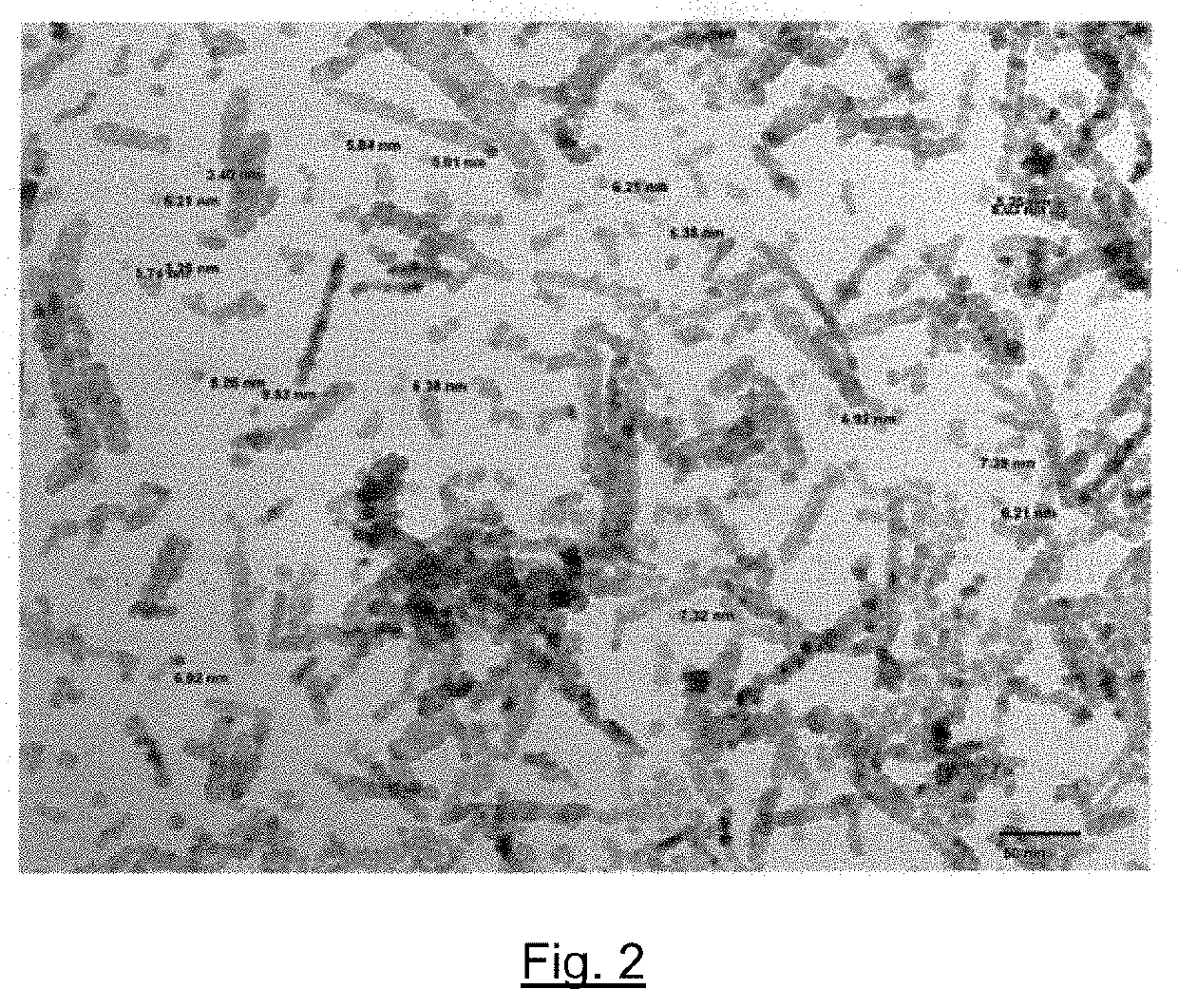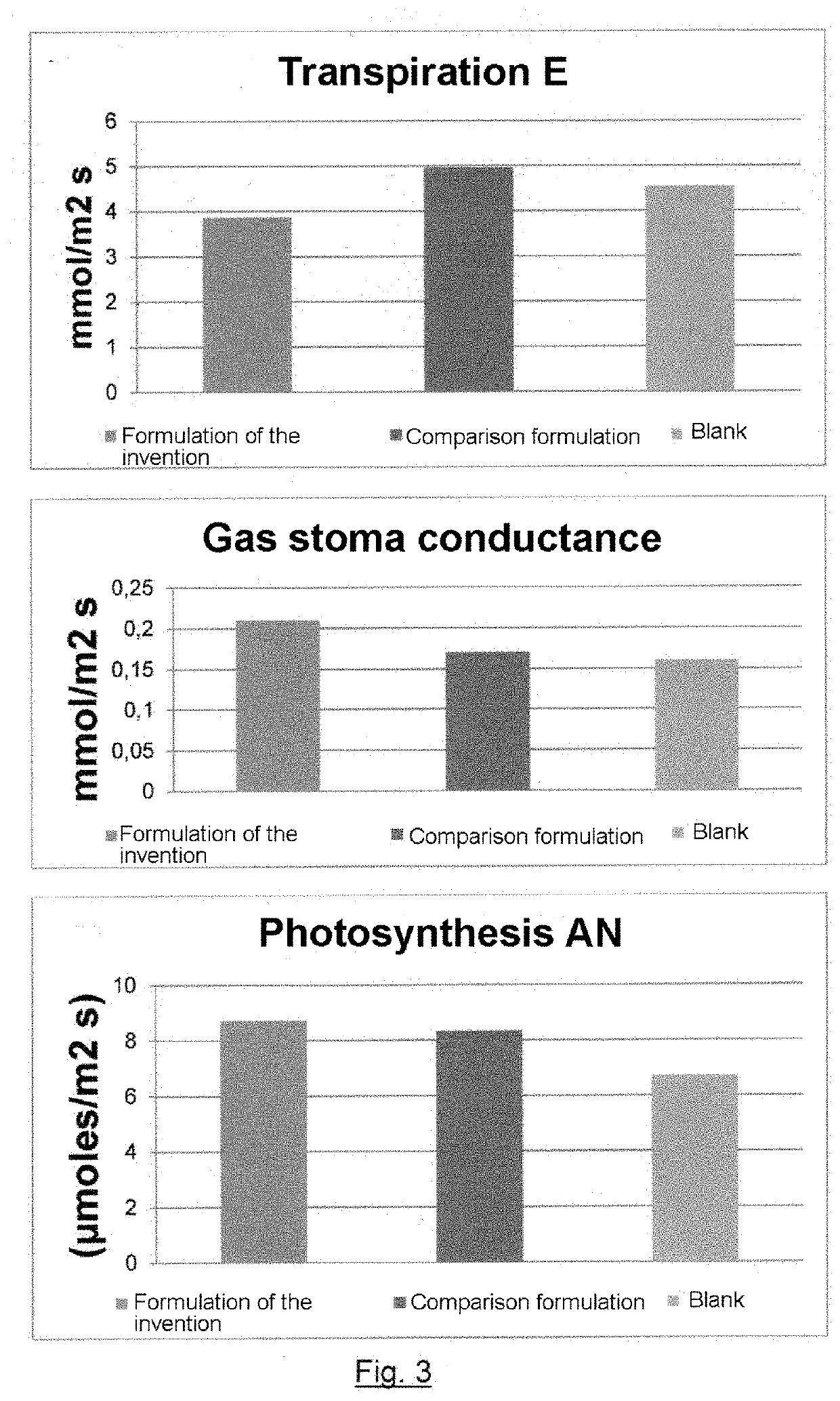LIQUID FORMULATION BASED ON CuO NANOPARTICLES TO BOOST THE SELF-DEFENCE OF PLANTS AND USE OF SAME
a technology of cuo nanoparticles and liquid formulations, applied in the direction of pest control, plant growth regulators, fungicides, etc., can solve the problems of reducing the amount and quality of harvest, and no fungicides nor other control strategies that achieve complete eradication
- Summary
- Abstract
- Description
- Claims
- Application Information
AI Technical Summary
Benefits of technology
Problems solved by technology
Method used
Image
Examples
example 1
[0024]A test is performed of the formulation of the invention to evaluate its effect on vine wood diseases (VWD). For a more rigorous understanding of the response of vine plants infected with the fungi causing VWD and treated with the various products developed, an experimental vineyard was implanted with 36 young vines in pots. The test was performed during the 2017 season in the facilities of VITEC. The evaluation of the formulation of the invention compared to a commercial formulation yielded the following results:[0025]PRODUCT 1=Comparison formulation[0026]PRODUCT 2=Invention formulation
[0027]The 36 plants were arranged in a pattern of 2 repetition blocks. Each experimental unit was formed by 3 plants considered biological replicas, for a total of 6 vines per condition. The test compared 6 different conditions, as described below.[0028]1. CONTROL WITHOUT FUNGUS+NO PRODUCT [0+C][0029]2. CONTROL CON HONGO+NO PRODUCT [0+HH][0030]3. CONTROL WITHOUT FUNGUS+PRODUCT 1 [1+C][0031]4. CO...
example 2
[0042]A test was performed of the formulation of the invention to evaluate its effect on mildew symptoms. Specifically, a test was performed with 2 plots corresponding to 2 different batches (FCL98 and VN42), in which 3 treatments were defined (blank, formulation of the invention and comparison formulation). This was repeated 4 times as indicated in the schematic representation of the test shown in FIG. 4 of the accompanying drawings. As a whole, the number of plants on which the copper treatments were performed was 1200 plants for each batch. The formulation of the invention was applied via leaves and the test was performed in the 2017 season by the University of Navarre.
[0043]To quantify the symptoms of mildew, 20 plants of each batch and repetition were selected at random, counting for each one:[0044]Total no. of leaves per plant (healthy and affected)[0045]Total number of leaves affected by mildew[0046]% affection by mildew in the affected leaves
[0047]These data were used to cal...
PUM
 Login to View More
Login to View More Abstract
Description
Claims
Application Information
 Login to View More
Login to View More - R&D
- Intellectual Property
- Life Sciences
- Materials
- Tech Scout
- Unparalleled Data Quality
- Higher Quality Content
- 60% Fewer Hallucinations
Browse by: Latest US Patents, China's latest patents, Technical Efficacy Thesaurus, Application Domain, Technology Topic, Popular Technical Reports.
© 2025 PatSnap. All rights reserved.Legal|Privacy policy|Modern Slavery Act Transparency Statement|Sitemap|About US| Contact US: help@patsnap.com



